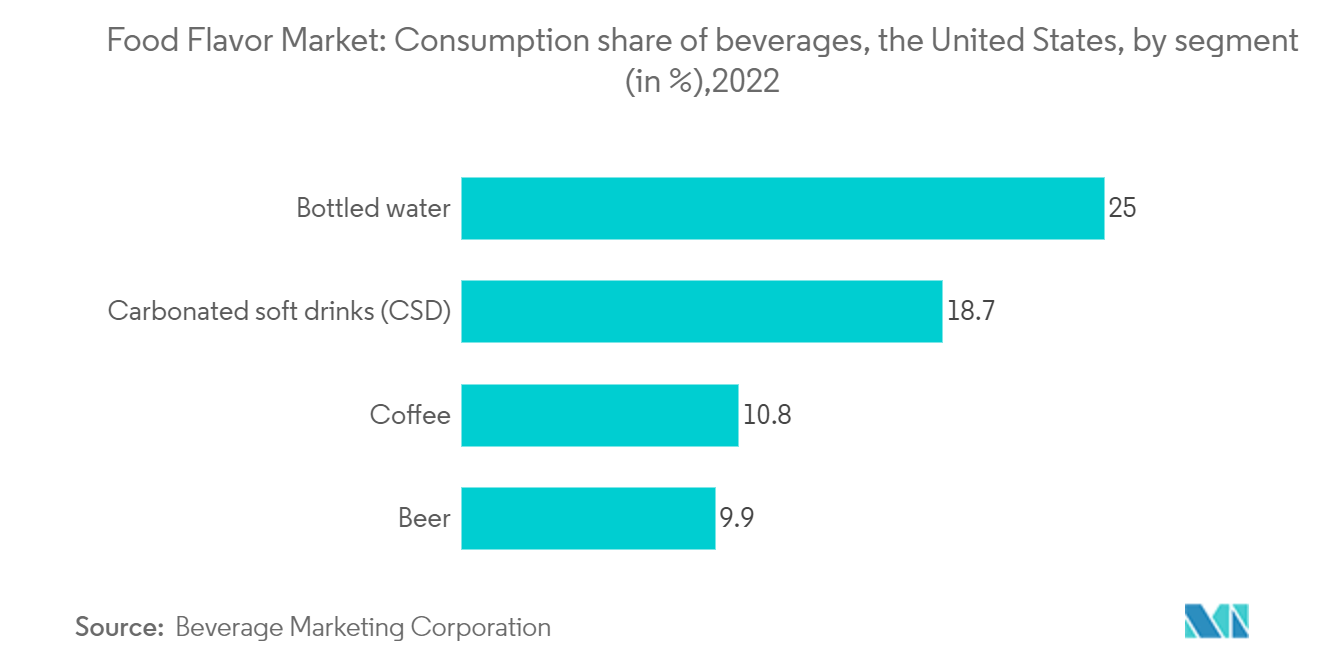Market Trends of Food Flavor Industry
Rising Demand for Beverages Drive Application of Flavors
Food flavors find applications in a variety of beverages, including alcoholic drinks, carbonated beverages, coffee, tea, energy drinks, flavored water, juice-based drinks, and sports drinks. consumers nowadays seek more from their beverages than mere thirst quenching. As a result, drinks like soft drinks and smoothies are evolving to provide unique experiences and flavor bursts tailored to individual preferences. Shifting dietary preferences and a growing young demographic are driving the demand for carbonated beverages. Furthermore, the rising trend of processed products is amplifying carbonated drink consumption. There is a surging demand for natural food flavors in beverages, largely driven by consumers' increasing preference for clean-label products that emphasize naturally sourced ingredients. Notably, in January 2024, Molson Coors Beverage Company introduced a new flavor, Limeade, boasting 5% real fruit juice, freshly squeezed and concentrated.

Asia Pacific Holds Major Share in Food Flavor Market
With the rise in urbanization and increase in working population, the Chinese market is witnessing a rising demand for packaged food, which is thereby increasing the need for food processing solutions. Therefore, to preserve the freshness, safety, taste, appearance, and texture of products, the demand for food flavors is rising in China.
Japan boasts a renowned food culture, celebrated for its meticulousness, premium ingredients, and a wide array of flavors. The demand for flavor ingredients in Japan is shaped by a myriad of factors, spanning cultural inclinations, culinary legacies, health consciousness, and evolving consumer preferences. Japan offers a variety range of functional ingredients controlled by its Food for Specified Health Use (FOSHU) regulatory requirements approved by the Ministry of Health and Welfare. The country is industrially rich. Hence, it provides a good opportunity for manufacturers to offer their products to the freshly blooming local industries and establish a strong consumer base in the local market.
Australian food and beverage manufacturers are increasingly turning to food flavors, driven by several key factors. A significant driver is multicultural population, which boasts a wide array of taste preferences. This rich diversity has cultivated a growing appetite for an extensive range of flavors, drawing from global influences. As ethnic cuisines gain traction, they mold mainstream food preferences, compelling manufacturers to expand their flavor offerings.


